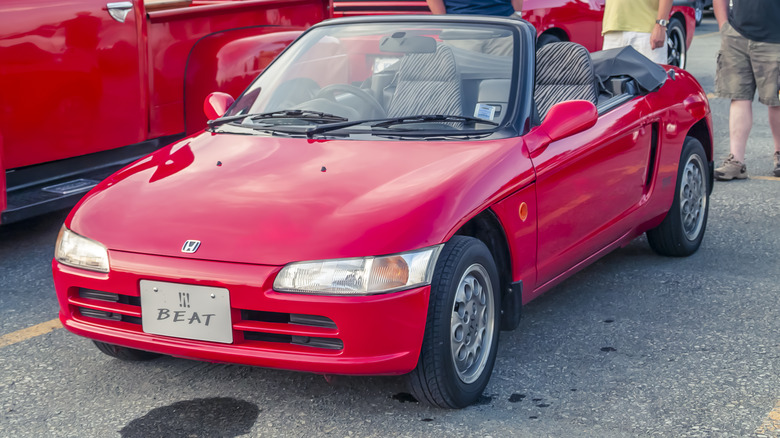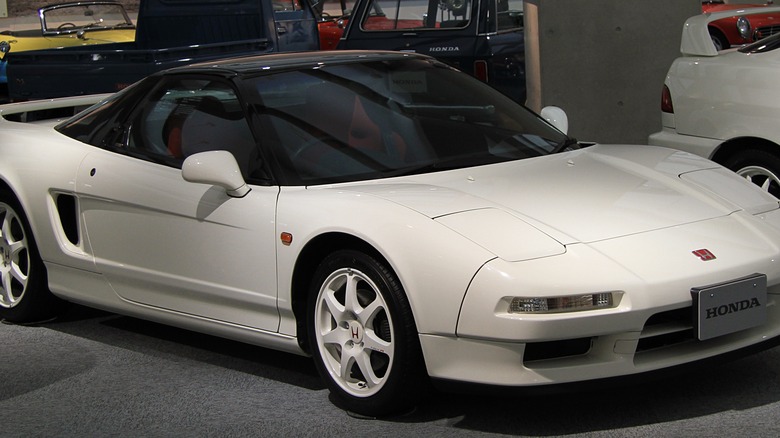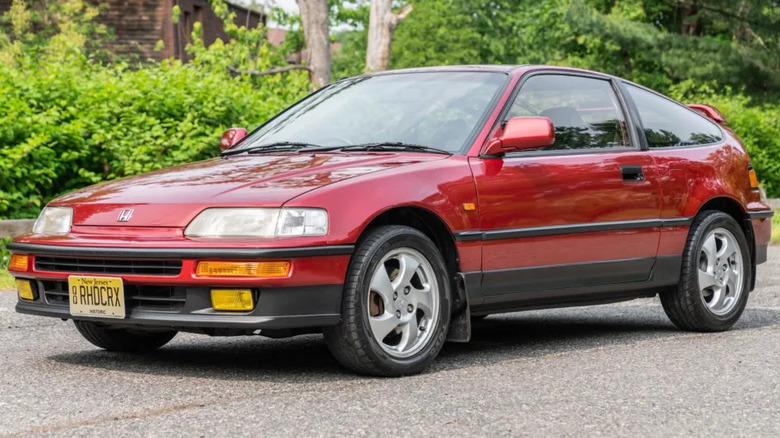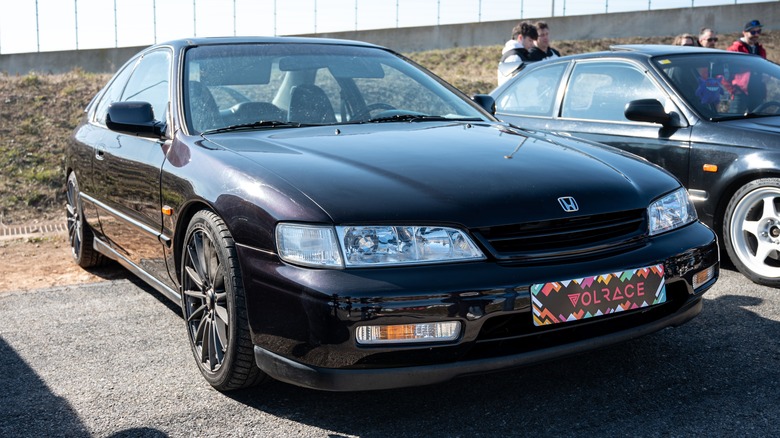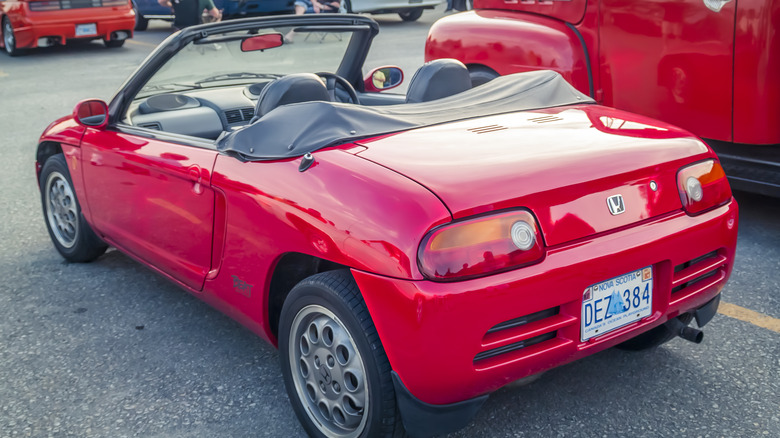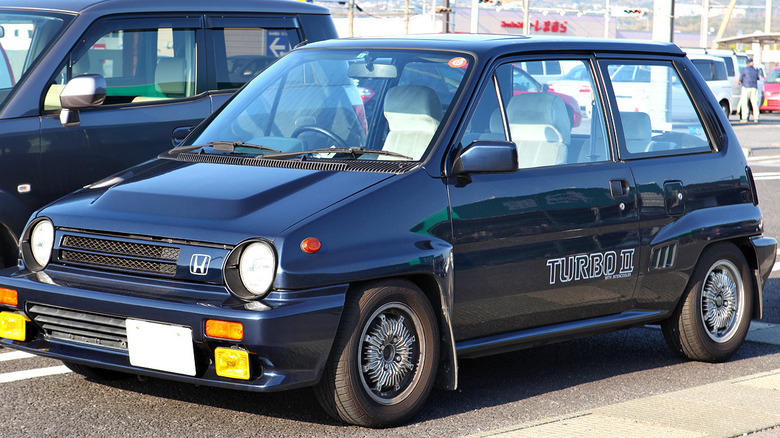5 Awesome Hondas That Were Never Sold In America
Honda sold more than a million cars in the United States last year, capturing almost 10% of the domestic auto market. Since it first broke into the U.S. market in 1970, Honda has sold more than 12.3 million of the 11 generations of Civics and more than 12.7 million of the 11 generations of Accords in the U.S. since introducing the models in 1973 and 1976, respectively.
While those top sellers have propped up Honda USA's business over the past four decades, Honda sold about 3.7 million vehicles worldwide last year and has moved between 2.6 million and 5.3 million cars a year since 2002. However, some of the most exciting models Honda made were never offered to American customers, with many of them restricted to European and/or Asian markets.
Some of those models carry the "R" designation, a label Honda applied to racing-spec models, and it's likely the automaker felt it necessary to keep those vehicles off of American roads in the days of 55 mph speed limits and offer them only to drivers with access to highways like Germany's Autobahn.
Let's look at five cars that Honda never offered American buyers and see what stateside drivers were missing out on.
Honda NSX Type R
One of the most exciting Honda models to make it to American dealerships was the performance-minded NSX, which debuted in 1991 badged as an Acura in North America. The first-generation NSX was developed with help from racing legends like Ayrton Senna and ran through the 2005 model year. The original NSX had a 270 horsepower 3.0 liter VTEC V6 that could rev safely to 8,000 RPM.
A second generation of the NSX was produced from 2017 through 2022, featuring a 3.5 liter twin-turbo V6 supplemented by three electric motors, together which combined to put out 573 horsepower. A Type S version added carbon fiber trim to shed weight, along with higher-flow fuel injectors and larger capacity batteries to boost the engine to an even 600 horsepower.
Almost two decades before Honda went to a hybrid drivetrain for the second generation NSX, European markets got the NSX Type R, a stripped-down racing spec model that was produced from 2002 through 2005. Gone were the stereo, air conditioner, and one layer from the double-panel rear glass. The targa top was also converted to a fixed roof, and the hood and rear spoiler were converted to carbon fiber to save additional weight. The electric leather seats were also replaced with carbon-fiber Recaro models, and all these changes cut nearly 200 pounds from the Type R's weight.
The suspension and brakes were upgraded as well, and the Type R was a half second faster from 0-60 than the standard issue NSX, reaching that mark in five seconds flat.
Featured image by TTNIS via Wikimedia Commons | Cropped and scaled | CC BY 1.0 |
Honda CRX SiR
Honda did not reserve the Type R treatment for the NSX supercar. The CRX was a popular choice for stateside buyers, averaging nearly 50,000 units sold each year from 1984 through 1991, and a 1985 Si submodel (designating a Sport package with fuel injection) boosted horsepower from 76 to 91 over the base version. More upgrades came in 1988, including an independent double wishbone suspension at all four corners and a new 1.6-liter four-cylinder motor with multi-port fuel injection that put out 105 horsepower and catapulted the CRX Si from zero to 60 in eight and a half seconds.
Japanese buyers got an even more potent Si-R model with a B16A VTEC engine capable of a whopping 160 horsepower, a limited-slip rear differential, and an optional glass roof.
The CRX SI-R was offered in Japan until mid-1992, and the 25-year import restriction clock on the model has run out, meaning it's time to keep your eye on auction sites and other secondhand marketplaces if this peppy little beast strikes your fancy.
Honda Accord Euro R/Type R
The CRX Si wasn't Honda's only commuter car to get the Type R treatment. From 2006 until 2008, Honda produced an Accord Euro R that, despite the moniker, was only available in Japan. The Accord Euro R got Honda's K20A 2.0 liter inline four cylinder engine, along with a six-speed manual gearbox and double wishbone suspension.
Honda also provided European buyers with a Type R Accord beginning in 1998, dropping a 209 horsepower 2.2-liter four-cylinder engine under its hood and mating it with a five-speed manual transmission. The European market Type R Accord's engine could produce 209 horsepower and 158 pound-feet of torque and propel the Accord from zero to 60 in 7.2 seconds.
The European market Accord Type R remained in production until 2002; despite its marginally smaller displacement, the Japanese market Euro R engine had a slightly better power output at 217 horsepower and 163 pound-feet of torque.
Honda Beat
While most vehicles in Japan's kei car segment were geared strictly toward economy, the Honda Beat convertible was an admission that these cars could also be fun to drive. The Beat was the last vehicle approved by company founder Sochiro Honda before his death in 1991, and about 34,000 of the diminutive roadsters were produced between 1991 and 1996. The Beat's .7 liter three-cylinder engine was placed directly behind the rear seats, and the 89.8-inch wheelbase and 5.3-inch ground clearance gave the Beat a go-kart feel.
Each of the three cylinders had its own throttle body, and the engine put out 64 horsepower all the way up to the redline of 8,100 RPM. The Beat was hardly a speed demon, puttering along from zero to 60 in 13.4 seconds and topping out at 83 mph, but it delivered fuel economy of more than 63 miles per gallon, thanks in part to the five-speed manual transmission and curb weight of under 1,700 pounds.
Honda City Turbo II
Another small, quirky Honda that was only sold in Japan was the City Turbo II, which came with a folding Microcompo mini-scooter that fit in the rear cargo area. The City Turbo II was produced between 1983 and 1987, and the 1.2-liter inline four-cylinder engine was capable of 109 horsepower and 118 pound-feet of torque, enough to push the 1,620-pound hatchback from zero to 60 in a respectable 8.6 seconds and give it a top speed of 112 mph.
The City Turbo II's 41.4 mpg combined fuel economy and 10.8-gallon gas tank gave it a cruising range of almost 450 miles, and the included scooter allowed drivers to extend that range even further.
Although the City Turbo II was originally only available to Japanese buyers, import restrictions have now expired, and examples occasionally come available on the secondhand market, complete with scooters and often in excellent condition.
Featured image by Tennen-Gas via Wikimedia Commons | Cropped and scaled | CC BY 3.0 |
